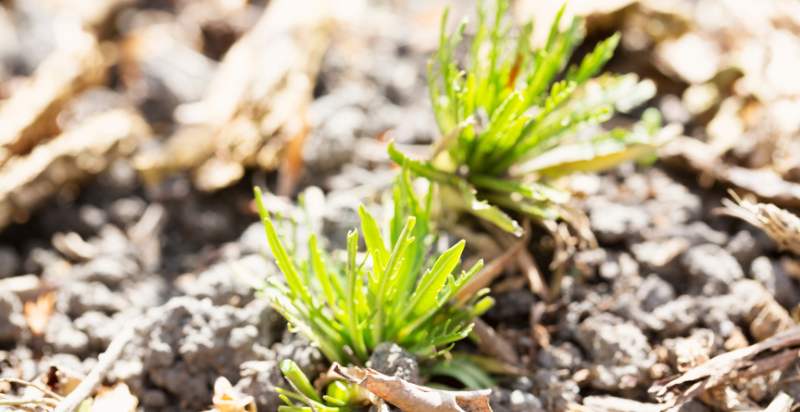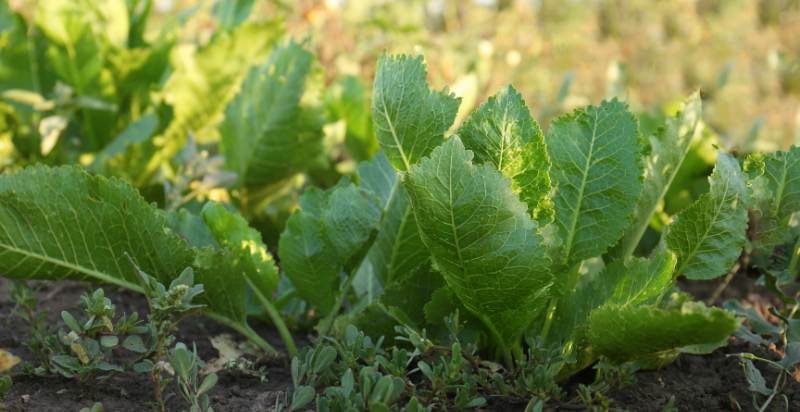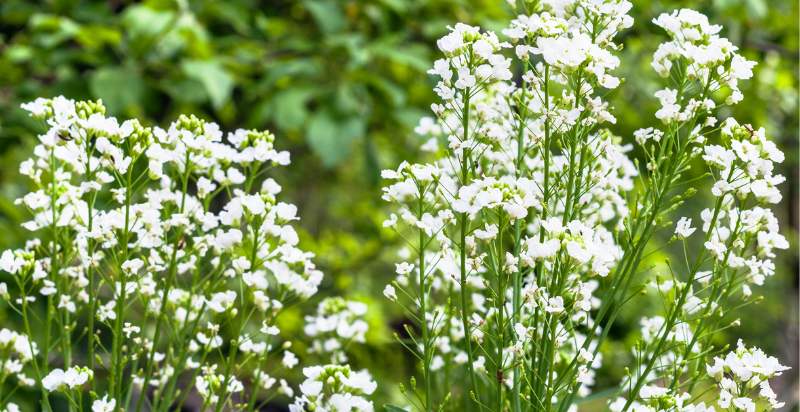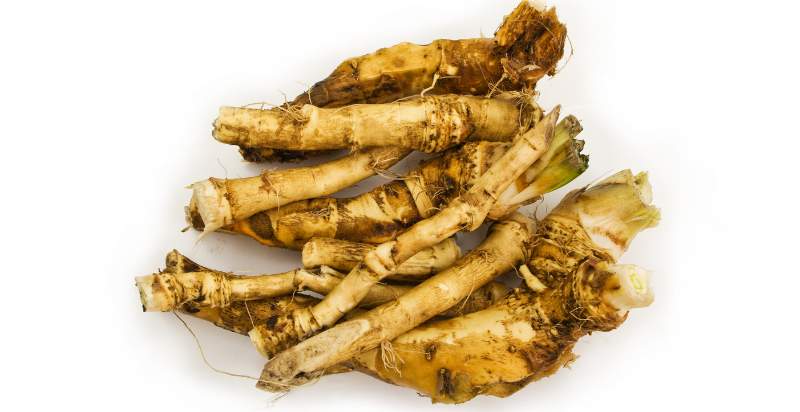Horseradish is a pungent root vegetable used for centuries as an herbal remedy and condiment. It’s known for its strong flavor and is often grated and mixed with vinegar or other ingredients to make sauces, relishes, and spreads. Horseradish is also sometimes used as a garnish in soups and salads. Here is everything you wanted to know about Horseradish :
What is Horseradish?
Horseradish is a root vegetable belonging to the Brassicaceae family, including cabbage plant, kale plant, and mustard plant. It has an elongated white root with tan skin and multiple lateral roots. Horseradish leaves are lance-shaped and dark green. The plant can grow up to three feet in height.
History and Origin of Horseradish:
The origin of horseradish is believed to be in the eastern Mediterranean region. It has been used since ancient times as an herbal remedy and condiment. The plant was brought to America by European settlers in the 16th century and became widely available throughout Europe in the 17th century.
What does Horseradish taste like?
When the root is cut or grated, a pungent aroma is released. The flavor of horseradish can range from mild to hot and spicy. It has a sharp and peppery taste that is often described as sinus-clearing and nose-tickling.
Types of Horseradish:
Horseradish comes in several varieties, including red and white horseradish. Red horseradish has a deep purple skin and is milder in flavor than white horseradish. It is commonly used to make condiments and sauces. White horseradish is the most common variety and has a pale yellow or tan color with a stronger flavor.
Nutritional Value of Horseradish:
Horseradish contains a range of essential vitamins and minerals, including vitamin C, potassium, calcium, iron, magnesium, phosphorus, zinc, manganese, copper, folate, thiamin (B1), riboflavin (B2), niacin (B3), pantothenic acid (B5), and vitamin B6. The root also contains a significant amount of dietary fiber, protein, and healthy fats.
Health Benefits of Horseradish:
Horseradish is known for its antibacterial and antimicrobial properties, which may help reduce inflammation and fight off infections. It’s also been used as a natural remedy to treat digestive issues like constipation, acid reflux, and irritable bowel syndrome due to its diuretic effects.
Horseradish consumption has also been linked to improved heart health thanks to its anti-inflammatory properties; it has the potential to reduce cholesterol levels, decrease high blood pressure, and improve circulation. Finally, horseradish may help boost your immune system by providing antioxidants that can help protect the body from free radical damage caused by environmental stressors.
How to Use Horseradish?
Horseradish can be grated or finely chopped and used as a condiment on sandwiches, burgers, and other dishes. It also makes an excellent addition to sauces and marinades. The root can also be mixed with vinegar, oil, sour cream, or mayonnaise to make creamy horseradish spreads that are often served alongside steak or roast beef. Finally, horseradish is sometimes added to salads and soups for extra flavor.
Horseradish is an aromatic root vegetable with a spicy flavor that has been used for centuries as both a herbal remedy and a condiment. The root provides numerous health benefits, including reducing inflammation, boosting heart health, and improving digestion.
It can be grated to make sauces, relishes, spreads or added to salads and soups for an extra kick of flavor.
How to Plant Horseradish?
Growing horseradish is a simple process and can be a great addition to your garden. Horseradish has been used for centuries in cooking and medicinal remedies, with its pungent root adding flavor to dishes or providing relief from respiratory ailments, among other benefits. Before you start planting horseradish, you should consider several things, such as the type of soil you have and where to plant the root.
Soil Preparation:
Horseradish grows best in deep, moist soils that have plenty of organic matter incorporated into them. If your soil does not meet these requirements, it may be beneficial to amend it by mixing in aged manure or composted leaves. Loosen the soil to a depth of at least 12 inches and thoroughly mix the amendments.
Planting:
Horseradish can be planted either from fresh root cuttings or from seeds. Root cuttings are generally easier to find than seeds, so they are recommended for beginners. Plant the cuttings 1/2 inch deep with at least 8-10 inches between each piece. If planting seeds, scatter them over the area you want to grow horseradish and cover lightly with soil. Seeds typically take up to three weeks to germinate.

How to Care for and Grow Horseradish?
Caring for horseradish is quite simple once you’ve planted it. Make sure to water your plants deeply every few days and fertilize them with a balanced fertilizer every 6-8 weeks. Mulching is also recommended to protect the roots from temperature changes and moisten the soil. During the growing season, remove any weeds or compete for vegetation, as they can hinder growth.
In terms of harvesting, horseradish can be harvested after it has reached 8 inches in height. Dig up the entire root system being careful not to damage any other nearby roots. Once the dirt has been washed off, cut away any part of the root that isn’t white or light green before using or storing your horseradish for later use.
You can enjoy fresh horseradish root in your cooking or medicinal remedies with proper care and maintenance.

How to Preserve Horseradish?
Preserving horseradish is fairly easy, and several methods work well. The most common way is to grate the horseradish root and mix it with vinegar, salt, and sugar before storing it in an airtight container in the refrigerator. This will keep for up to 6 months.
Another option is to freeze the grated horseradish in ice cube trays and store them in a zip-top bag in the freezer for up to 12 months. You can also make a paste out of horseradish root by blending it with vinegar and mustard. This paste is highly recommended for those who plan to use the horseradish regularly, as it stays fresh in the refrigerator for up to 8 weeks.
Whichever method you choose, label your containers with the date, so you know how long it has been stored. With these tips, you’ll be able to enjoy flavorful horseradish root all year round.
How to Process Horseradish?
Processing horseradish requires a few simple steps and produces a delicious condiment that can be used in many dishes or medicinal remedies. Begin by washing off any dirt from the root and then cut away any part of the root that isn’t white or light green. After that, you can grate the horseradish root by hand or use a food processor to do the work.
If you plan on making a paste out of horseradish root, blend it with vinegar and mustard before storing it in an airtight container in the refrigerator. If you’d like to preserve your horseradish for longer storage, mix grated horseradish with vinegar, salt, and sugar before transferring into an airtight container and storing it in the refrigerator for up to 6 months.
Alternatively, freezing the grated horseradish in ice cube trays will keep it fresh for up to 12 months when stored in a zip-top bag in the freezer. No matter how you process your horseradish, you’ll surely enjoy its flavor for months to come!
By following these simple steps, you’ll be able to enjoy fresh and flavorful horseradish roots all year round.

Preventions from Pests and Diseases:
The best way to prevent pests and diseases is by following basic gardening practices such as proper care and maintenance, including watering and fertilizing. Additionally, removing any weeds or competing with vegetation that can hinder growth is important. Applying an insecticide or fungicide to protect against potential pests or diseases may also be necessary.
Lastly, crop rotation can help reduce the chances of pest infestations and disease build-up in the soil, so be sure to rotate your horseradish plants every growing season. Following these steps will ensure a healthy harvest of horseradish each year.
How to Harvest Horseradish?
Horseradish can be harvested after it has reached 8 inches in height. To harvest the root, carefully dig up the entire root system being careful not to damage any other nearby roots. Once the dirt has been washed off, cut away any part of the root that isn’t white or light green before using or storing your horseradish for later use.
Following these steps and with proper care and maintenance, you can enjoy fresh horseradish root in your cooking or medicinal remedies all year round!

How to Store Homegrown Horseradish?
The best way to store homegrown horseradish is in an airtight container in the refrigerator. Grated horseradish will last up to six months, while a paste made from horseradish root and vinegar can be stored for eight weeks. Alternatively, you can freeze grated horseradish in ice cube trays and store them in a zip-top bag in the freezer for up to 12 months.
No matter which storage method you choose, label your containers with the date, so you know how long it has been stored. With these tips, you’ll be able to enjoy flavorful horseradish root all year round!
How to Use Horseradish?
Horseradish is a versatile root that can be used for both cooking and medicinal purposes. Fresh horseradish root can be grated or blended to make sauces, dressings, and condiments like wasabi and added to soups and stews for an extra kick of flavor. The condiment is also commonly served with meats such as beef and fish for extra flavor.
In addition to its culinary uses, horseradish has numerous medicinal benefits. It’s known to help soothe congestion due to the presence of compounds called sinigrin glycosides which act as decongestants when heated up in food or drinks. Horseradish also helps improve digestion, boost immune system function and even reduce pain in certain forms of arthritis.

Potential Risks from Horseradish:
While horseradish is generally safe for moderate consumption, some potential risks are associated with the root. Eating large quantities of horseradish can cause digestive discomfort and stomach aches due to its strong flavor and high levels of certain compounds like sinigrin glucosides. It’s also important to note that consuming raw horseradish may increase the risk of foodborne illnesses, so it’s best to consume cooked or processed versions of the root if possible.
Additionally, people who suffer from urinary tract infections should avoid consuming large amounts of horseradish as it can irritate existing symptoms. Lastly, those with gout should not eat excessive amounts of horseradish as its inflammatory properties may worsen joint pain and swelling.
Overall, horseradish is a flavorful and versatile root with numerous health benefits. It can be enjoyed as part of a healthy diet when consumed in moderation. Remember to follow these tips when growing, storing, harvesting, and using horseradish to help ensure the best possible results!
Conclusion:
Horseradish is a root vegetable that has been used for centuries as both a food and medicinal remedy. When properly cared for and harvested, it can be stored in an airtight container in the refrigerator or freezer for later use. Its flavorful kick is perfect for adding to sauces, dressings, condiments, soups, stews, and meats. Additionally, horseradish can offer numerous health benefits, such as relieving congestion and improving digestion when consumed in small amounts. With these tips, you’ll surely enjoy the flavor of horseradish all year round!
- Apricot Blossoms: Description, Flavor, Benefits, And Uses - April 23, 2024
- Everything you wanted to know about Green Tiger Tomatoes. - April 1, 2024
- Everything you wanted to know about Atomic Grape Tomatoes . - April 1, 2024

3 thoughts on “What is Horseradish? How to Plant, Grow, and Harvest Horseradish Root”
Comments are closed.